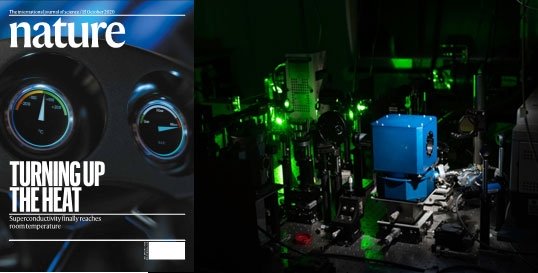The Science
Superconductivity is a state where a material has zero resistance to electricity. Until now, scientists have only observed superconductivity at temperatures hundreds of degrees below zero. Now, for the first time since scientists discovered superconductivity in 1911, they have created the world’s first superconductor that works at room temperature. To do so, they engineered a new material never before found on earth. They made the material using a photochemical process to create a starting framework of hydrogen-rich materials. This allowed them to introduce methane and hydrogen sulfide to get the right amount of hydrogen for superconductivity.
The Impact
The discovery achieves the more-than-a-century-long quest to find room temperature superconductivity. The progress on “hot” superconductivity in novel hydrogen-rich materials will help scientists better understand superconducting mechanisms. In turn, it may allow researchers to formulate strategies for devices that rely on quantum physics principles. These devices could have applications in producing and storing energy. They could also advance quantum computing.
Summary
The most significant discovery in reaching room temperature superconductivity is the pressure-driven reaction of hydrogen sulfide to produce hydrogen trisulfide with a confirmed electrical resistance of 203 degrees Kelvin at 155 gigapascals of pressure. As hydrogen sulfide readily mixes with hydrogen to form guest-host structures at lower pressures, the comparable size of methane to hydrogen sulfide should allow molecular exchange within a large assemblage of van der Waals solids that are (highly) hydrogen-rich with hydrogen inclusions that are then the building blocks for novel superconducting compounds at extreme conditions. We report superconductivity in a photochemically transformed carbonaceous sulfur hydride system with a maximum superconducting transition temperature of 287.7 plus or minus 1.2 degrees kelvin (approximately 15 degrees Celsius) achieved at a pressure of 267 plus or minus 10 gigapascals. The superconducting state is observed over a broad pressure range from 140 to 275 gigapascals, with a dramatic upturn in electrical resistivity above 220 gigapascals. Superconductivity is established by the observation of zero resistance, magnetic susceptibility up to 190 gigapascals, and reduction of electrical resistivity under an external magnetic field up to 9 tesla, with an upper critical magnetic field of approximately 62 tesla based on Ginzburg–Landau model at zero temperature. The introduction of chemical tuning in our system could be the path forward to lowering the pressure while preserving room temperature superconducting properties.
Funding
This work supported by the National Science Foundation, the DOE Stockpile Stewardship Academic Alliance Program, and the Department of Energy Office of Science, Fusion Energy Sciences program.
